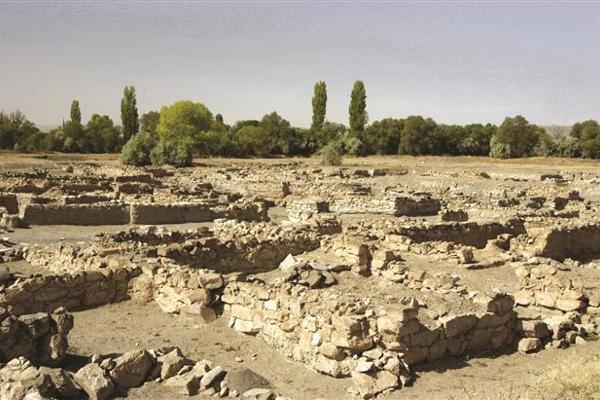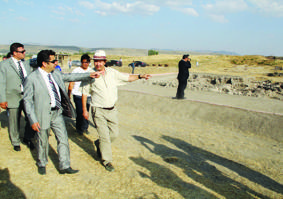Kültepe excavations might take 5,000 years
KAYSERİ - Anadolu Agency


The history of Kültepe dates back to 5,000 years ago and this year the excavations entered its 66th year. So far, 23,500 cuneiform tablets have been found in the area and officials think that their number will reach to millions. DHA photos
The Culture and Tourism Ministry is making efforts for the Kültepe tablets to enter into the UNESCO World Heritage List. Archaeological excavations have been recently launched at a ceremony at the ancient Kültepe site in the central Anatolian province of Kayseri, under the direction of the Ankara University Professor Fikri Kulakoğlu.Kulakoğlu said that Kültepe was a center where the history of Anatolia began. He said that Assyrian traders came to Kültepe 4,000 years ago and brought literacy to people there and, thanks to them, Anatolia had entered into the written history for the first time.
“New excavations show that the 4,000-year-old history could be traced back to an earlier time. We can talk about a 4,400-year-old history here. So far, 23,500 cuneiform tablets have been found in excavations here but Kültepe is a very large area. Maybe only 1 percent of this area has been excavated so far. Therefore the number of these tablets will reach to a few thousands. This is the biggest collection in the whole of Asia. Now the Culture and Tourism Ministry has started works for Kültepe tablets to be included in the UNESCO World Heritage List. We hope that these tablets will enter into the list, after the Boğazköy tablets,” he said.


Following his speech, Kayseri Mayor Orhan Düzgün and Mayor Mehmet Özhaseki observed the excavation area. Düzgün said that the first works in the area were carried out under the heading of one of the masters of Turkish archaeology, Professor Tahsin Özgüç in 1948. He said, “We think that works here are very important to shed light on not only Kayseri’s history but also for Anatolia’s and the world’s history. Kayseri is known as a city of trade. The people of Kayseri are known for their commercial mind. We see that it goes back to Kaniş/Karum. We have found many commercial contracts in tablets found in this area. Artifacts found here are displayed at museums.”
Mayor Özhaseki said that Kayseri had been home to many clans and civilizations, adding, “We are sitting on this heritage. We will do our best to help the excavations here.”
Kulakoğlu added that this year they would dig the depot of the palace and that they hoped to find new and different artifacts there.
